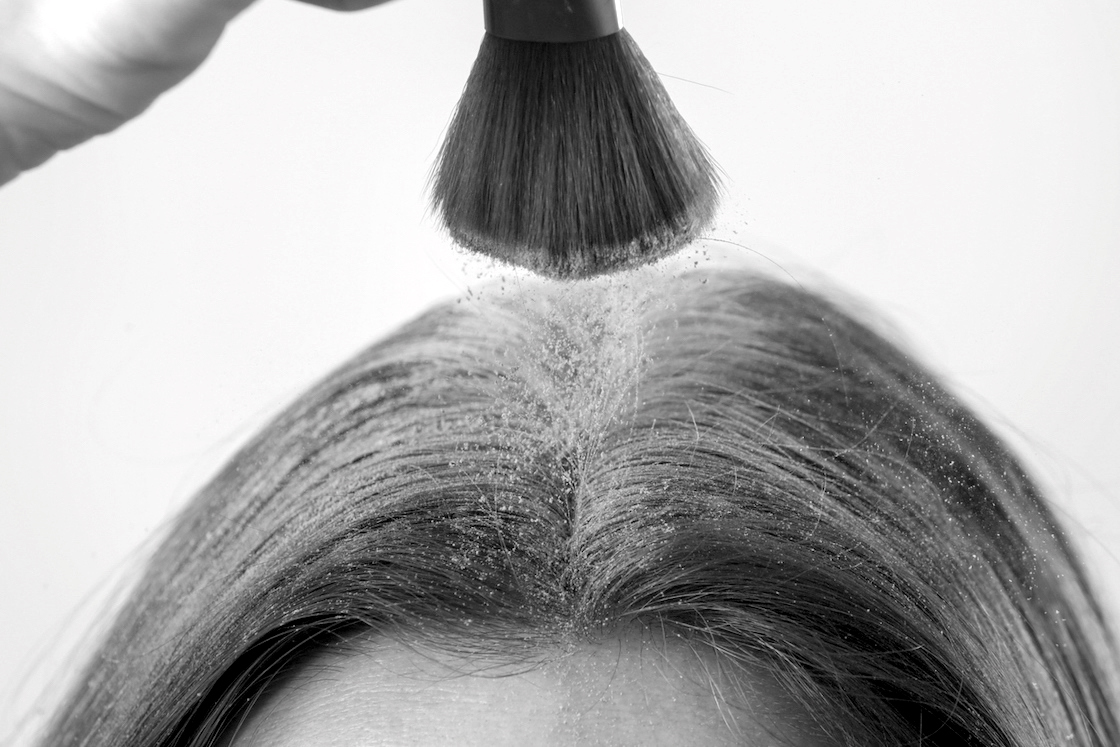Table of Contents
Dry shampoo has changed the way we take care of our hair. Even if you are in a rush and have no time to wash your hair thoroughly, you can still walk in in style with a simple yet effective dry shampoo routine.
Just apply it to your hair and scalp, and let the magic happen.
But there’s a catch. There are several dry shampoo ingredients that might be doing more harm than good to your beautiful hair. So it’s worth taking time to know about the dry shampoo ingredients to avoid before it is too late.
Dry Shampoo Ingredients to Avoid
Just take a look at the list of ingredients in any dry shampoo. Unless you have a degree in chemistry, they will not make any sense. So let us take care of the science for you. Avoid the following toxic dry shampoo ingredients at all costs.
1. Talc
Talc is known for its highly absorbent property, a key ingredient in most dry shampoo products. It absorbs excess oil from your hair and gives it a nice, silky look. But things get a little darker behind the scenes.
The main culprit is asbestos fibers present in the talc and other minerals like silicon and magnesium. Here’s where it gets scary: the inhalation of talc leads to asbestos deposits in your lungs that cause lung cancer and other respiratory health risks. So try your best to avoid it from your beauty care routine.
2. Liquid Petroleum Gas (LPG)
Industries use LPG like propane and butane as an aerosol propellant for spraying the product. Most dry shampoos come in aerosol containers for convenience. These gases are not only harmful to the environment but also your health.
You must have experienced headaches, nausea, or breathing problems after spraying dry shampoo on your hair. If you have asthma, you should not be anywhere near this product.
3. Cetrimonium Chloride
Cetrimonium chloride acts as an anti-static agent used to condition the hair. But with repeated use, you will notice signs of damages to your scalp. In addition, this ingredient is notorious for being toxic, allergenic, irritating, and in some cases, fatal.
If you are too worried about wind-whipped and frizzy hair, consider applying an organic hair oil that keeps your scalp safe and healthy. According to EU Cosmetics Directive, if you have to use a dry shampoo with this ingredient, make sure that the concentration is below 0.1%.
4. Octamethylcyclotetrasiloxane
Octamethylcyclotetrasiloxane sounds like a tongue twister, but it does more than that. Silicon-based ingredients are found in almost all beauty products like soaps, deodorants, lubricants, and other cosmetics.
This ingredient is used in dry shampoos for its ability to stay intact and dry faster. But its repeated use will damage your hair strands and make them brittle instead of luscious. Mission failed!
5. Phenoxyethanol
Originally, phenoxyethanol is a chemical naturally found in green tea. Its job is to fight against bacteria. But this ingredient in dry shampoo is synthetically produced by altering the chemical composition.
We recommend avoiding this artificial chemical to protect yourself from potential skin conditions like rashes, hives, blisters, and even eczema. If phenoxyethanol is not from green tea, then it’s definitely toxic.
6. Aluminum
Aluminum has more vices than virtues when it is about your hair. This toxic ingredient will inevitably enter your bloodstream through soft tissue in your scalp, resulting in metal poisoning.
Even worse, overexposure to aluminum is often associated with health conditions like cancer, infertility, and kidney failure.
7. Alcohol
Remember how dehydrated you feel after gulping in a few rounds of cocktails? After repeated exposure to an alcohol-based dry shampoo, that’s precisely how your hair feels.
The alcohol present in dry shampoo absorbs the moisture and oils from your scalp. It also absorbs the natural oils required to maintain a healthy scalp during the process. Excessive use of dry shampoo will inevitably lead to dandruff, dryness, and breakouts.
Closing Time
You might be considering giving up on dry shampoo after learning about these toxic ingredients and their health consequences. But it won’t be that great of a problem with light to moderate use.
You can always consider natural alternatives with organic ingredients to these chemical-intensive products.
Last but not least, dry shampoo is not a replacement for wet shampoo. However, it’s worth investing your time washing your hair thoroughly with a wet shampoo for a healthy scalp.


